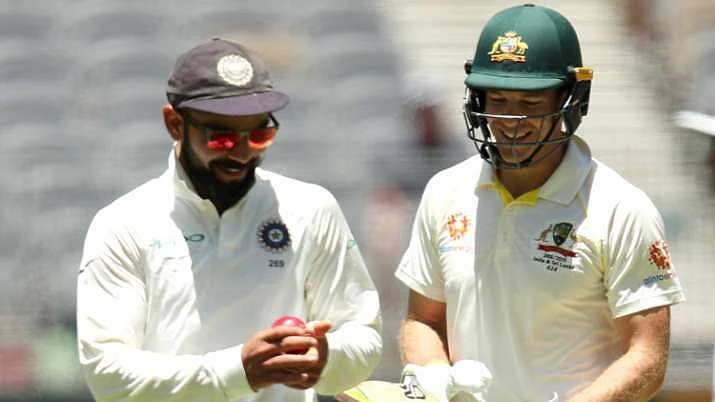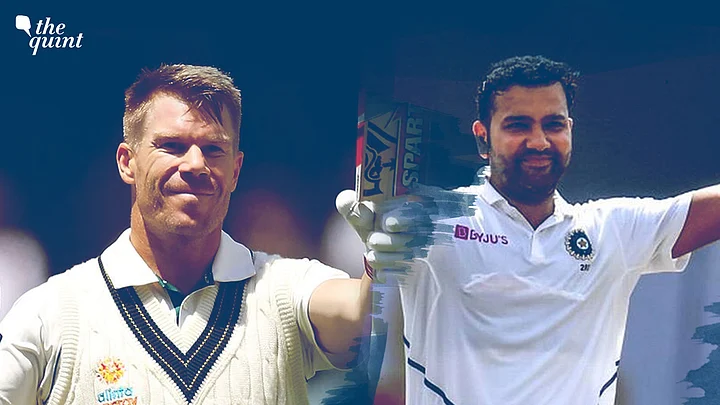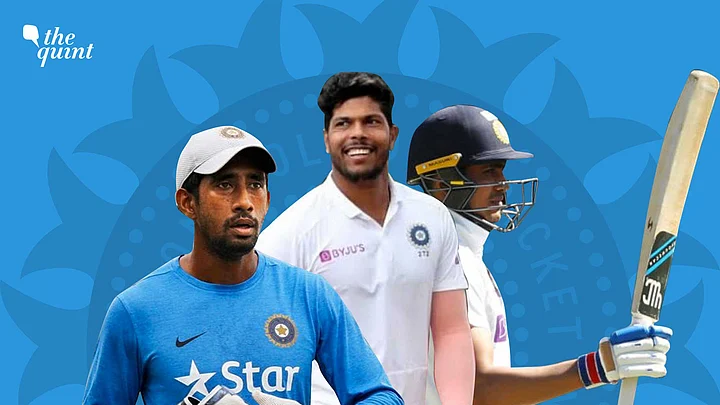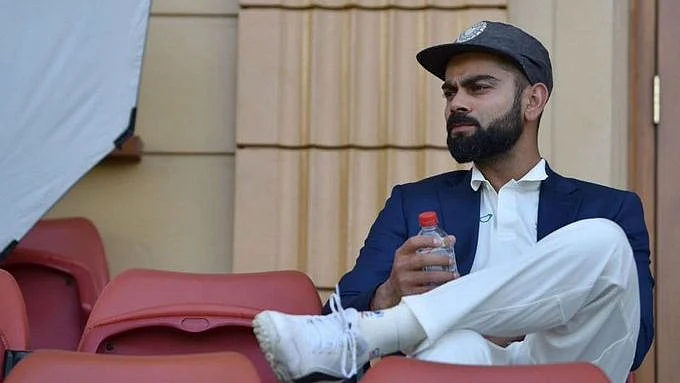Cricket fans Down Under and in the Indian sub-continent are excited and in keen anticipation of the start of the 4-Test series between Australia and India. Australian fans are excited because their team is the now the top-ranked team in the ICC Test rankings. They’re in anticipation because they have a score to settle - Australia lost the Test series the last time India toured there two years ago – and now have the opportunity to reclaim the Border Gavaskar Trophy.
Indian cricket fans are in anticipation because they haven’t seen their favourite cricketers don the whites and play with the red ball for nearly ten months. Indian fans are excited because this series is a momentous occasion; never before has an Indian team arrived in Australia having won the previous Test series there. Virat Kohli and company won the Test series in 2018-19, and there is expectation they have what it takes to win a Test series again.
At stake, apart from bragging rights, is the Border Gavaskar Trophy, crucial World Test Championship points, and the chance to firm up the number one position in the ICC Test rankings. Australia (116 rating points) go into the series as the top-ranked team, ahead of second-placed New Zealand (116 rating points) on the basis of a few decimal points, while India (114 rating points) are ranked third.

The schedule drawn up and agreed to by the two cricket boards – Cricket Australia and The Board of Control for Cricket in India - makes for interesting reading. Historically, teams visiting Australia kick off the Test series at Brisbane; in most cases, the pace and bounce at The Gabba would deflate the visitors right at the start of the series. However, this time around, proceedings will begin in Adelaide – with the Pink Ball Test.
The scheduling – particularly of the series opener – is interesting because neither team can claim any major psychological edge. Australia will be upbeat about the series opener being a day and night Test because they not only have plenty of experience playing with the pink ball and under lights, but because they have a 100% record in such matches. The Indian camp will be upbeat about playing in Adelaide because that is where they began on the previous tour and began the series with a 31-run win.

The series promises to be exciting because both sides feature some of the top cricketers playing the game currently. The hosts boast of the top-ranked batsman in the world – in Steve Smith, while India will counter that with Virat Kohli, who is ranked joint-second. The Australian line-up will also feature Marnus Labuschagne and David Warner (post Adelaide) – who are ranked 4th and 6th respectively. India’s ‘Wall’ Cheteshwar Pujara occupies seventh place in the ICC Test rankings for batsmen.

On the bowling front, every individual who forms part of Australia’s first-choice pace attack, finds a place in the top ten of the ICC’s Test bowling rankings; Pat Cummins, who caused India plenty of grief in the last series and has had a dream run since, tops the charts. Mitchell Starc and Josh Hazlewood are slotted in at 6th and 10th respectively. Jasprit Bumrah, who was the highest wicket-taker in the last series between these two teams, is India’s top-ranked bowler; he is ranked 9th.

Here’s identifying a few individuals whose performance (or lack of) will have a significant impact on their team’s fortunes, and picking out certain key stats to illustrate their importance.
Virat Kohli – Chance to break Sachin Tendulkar’s record
The Indian captain Virat Kohli is scheduled to feature in only the series opener. He is India’s best batsman and has impressive numbers on previous tours of Australia. Kohli has scored 6 Test hundreds from previous tours of Australia, and if he reaches the three-figure mark in the series opener, he will have more Test hundreds than any other Indian batsman.

Kohli must be delighted that the series is beginning at Adelaide – a venue where he will have fond memories of; 3 of Kohli’s 6 Test hundreds in Australia have been on the Adelaide Oval turf, and the Indian captain will look to add to his tally and set some momentum before he parts ways with the team.

Cheteshwar Pujara – India need him to tire the Aussies
One wouldn’t be too wrong in saying Cheteshwar Pujara left an indelible mark – a psychological one on the Aussies - during the previous Test series in Australia. On the 2018-19 tour Down Under, Pujara batted, batted and batted, and deflated the hosts. In 7 innings in that Test series, he faced 1258 balls – the most faced by any visiting batsman in a 4-Test series in Australia.
However, Pujara wasn’t able to carry that kind of form in the 9 Tests he played thereafter and had disappointing returns. The Indian camp will be hoping in the coming series the 32-year-old can reproduce what he did in the Test series two years ago.

India’s pace attack – as hostile and testing as any
India won the Test series in Australia last time riding on the performance of its pace attack. Jasprit Bumrah, Ishant Sharma, Mohammed Shami and company excelled on that tour and came in for a lot of praise – even from the Australian cricket pundits and the home media. On that occasion, India’s pacers took more wickets in the Test series, and took wickets more frequently too.
Jasprit Bumrah and Mohammed Shami were outstanding in that series, and expectations will be for them to replicate that form in the coming series too.

Ravichandran Ashwin – Effective more than ever before
For a while now, Ravichandran Ashwin has not been India’s first-choice spinner in overseas Test matches. However, the off-spinner has definitely worked on his bowling and is a much-better and more effective bowler now, compared to five or six years ago. On the last tour of Australia, he prised out 5 top order wickets in the series opener – though he didn’t play any part in the rest of the series. Ashwin is enjoying his cricket a lot more and is certainly in a much better mind space these days; one should expect him to cause some damage in the coming games.

Steve Smith – Australia’s run-machine
The biggest threat for India – among the Australian batsmen – has to be Steve Smith. The 31-year-old is by no means copybook with his batting technique; but he has the appetite for big runs and knows how to go about scoring runs – and is therefore the world’s best batsman. Smith, who has a phenomenal record against India, will be aware that opponents have in recent times worked him out with short-pitched deliveries. What strategy will the Indian bowlers come up with for Smith, and how will Smudge counter those?

Steve Smith’s scores in 4 home Tests against India: 162* & 52*, 133 & 28, 192 & 14, and 117 & 71!
Starc – India’s biggest threat in Adelaide
Mitchell Starc may have been wayward in the white ball series against India, but he is lethal in Test cricket – particularly when armed with the pink ball. The left-arm pacer averages 28.58 and takes a wicket every 51 deliveries in red ball Test matches; in contrast, with the pink ball he averages 19.23 per wicket and takes a wicket every 36 balls!

Under-estimate Nathan Lyon at your peril
Muttiah Muralitharan and Nathan Lyon are the two most-successful spinners against India. It is startling to know that they have a pretty similar record against India too; the Sri Lankan averaged 32.61 per wicket and had 7 5-wicket hauls in 22 Tests, while the Australian averages 32.60 against India and has 7 5-wicket hauls in 18 Tests. Lyon in fact has the better strike-rate of the two; his strike-rate against India is 60.20, while Muralitharan picked up a wicket every 66.86 deliveries!

The batsmen Lyon has dismissed most often in the Indian team: Cheteshwar Pujara (9 times), Ajinkya Rahane (9 Tests), Virat Kohli (7 times), Ishant Sharma (7 times) and Rohit Sharma (5 times)!
(At The Quint, we question everything. Play an active role in shaping our journalism by becoming a member today.)




